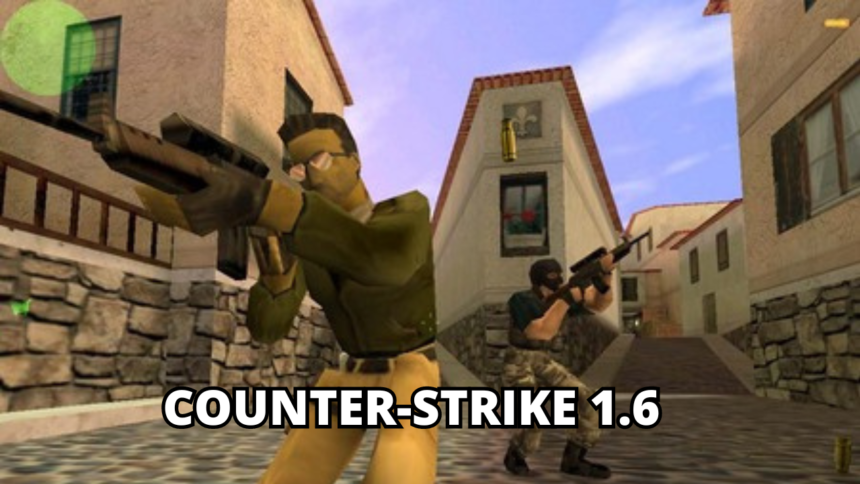Counter-Strike 1.6, released in 2003, is often hailed as one of the most iconic first-person shooters in the history of video gaming. Its impact on the gaming community and the eSports scene is undeniable, and much of its charm lies in the game’s minimalist yet memorable aesthetics. One of the lesser-discussed aspects of Counter-Strike 1.6 is the range of game icons, banners, and symbols that have come to represent this beloved title. In this article, we will delve into the history, significance, and evolution of Counter-Strike 1.6 (2003) game icons bannersthat have become emblematic of Counter-Strike 1.6.
The Origins of Counter-Strike 1.6
Before we dive into the visual aspects of Counter-Strike 1.6, it’s essential to understand its origins. Counter-Strike was originally a mod for Half-Life, developed by Minh “Gooseman” Le and Jess Cliffe. The mod’s popularity led to Valve Corporation officially developing Counter-Strike 1.6 as a standalone game. This version was released in 2003, and it quickly became a cornerstone of competitive gaming.
The Significance of Icons and Banners
In Counter-Strike 1.6 (2003) game icons banners crucial roles in defining the game’s identity. They serve not just as visual aids but also as representations of the game’s cultural and competitive legacy. Icons can convey information, evoke nostalgia, and symbolize the game’s competitive spirit. Let’s explore some of the most iconic elements.
The Classic Counter-Strike 1.6 Logo
The Counter-Strike 1.6 logo is perhaps the most recognizable symbol from the game. Its design is simple yet effective: a black silhouette of a counter-terrorist and a terrorist facing off against a yellow background. This logo has undergone subtle changes over the years, but the core elements have remained the same.
Design Features:
- Silhouette Representation: The silhouettes of the counter-terrorist and terrorist emphasize the game’s core concept of a conflict between two opposing sides.
- Color Scheme: The use of black and yellow creates a high-contrast, eye-catching effect that stands out on both digital and physical media.
- Text Elements: The bold, simple font used for “Counter-Strike” complements the visual elements of the game and ensures easy readability.
Historical Context
The logo’s design draws from the aesthetic of early 2000s video games, which often featured high-contrast, simplistic designs that could be easily rendered on the hardware of the time. This logo helped to establish Counter-Strike 1.6’s identity as a no-frills, high-intensity tactical shooter.
The Game’s Main Menu Banner
The main menu Counter-Strike 1.6 (2003) game icons banners is a minimalist piece that effectively captures the game’s atmosphere. It typically features a combination of the logo, a simple background, and images related to the game’s various maps and environments.
Design Features:
- Background Imagery: Often, the background includes subtle images of game maps, such as de_dust2 or cs_assault, creating a sense of immersion.
- Minimalist Approach: The lack of excessive details in the banner aligns with the game’s straightforward and unembellished design philosophy.
Nostalgic Appeal
For many players, the main menu banner is a nostalgic reminder of the countless hours spent in the game’s various maps. The simplicity of the design contrasts with the complexity of the gameplay, highlighting how the visual elements reflect the game’s tactical nature.
Map Icons and Symbols
In Counter-Strike 1.6 (2003) game icons banners are an integral part of the game’s user interface. These icons are used to represent different maps, and they are often designed with a straightforward, functional aesthetic.
Design Features:
- Map Representations: Icons typically feature simplified, top-down views of the maps, which help players quickly identify and select their favorite battlegrounds.
- Functional Design: The icons are designed to be easily recognizable and serve a practical purpose, making them crucial for both new and veteran players.
Cultural Impact
These map icons have become symbolic representations of various iconic gameplay experiences. Maps like de_dust2 and cs_assault are not just game levels but also cultural landmarks within the Counter-Strike community.
The Competitive Scene: Tournament Banners
Tournament banners from the Counter-Strike 1.6 era represent the competitive scene that helped the game achieve eSports fame. These banners often feature team logos, match schedules, and sponsor information.
Design Features:
- Team Logos: Banners prominently display team logos, reflecting the competitive spirit of the eSports scene.
- Event Details: They include information about the tournament, such as dates, locations, and prize pools.
Legacy
These banners capture the excitement of Counter-Strike 1.6’s competitive scene and represent a significant period in the game’s history. They serve as visual records of major tournaments and the players who competed in them.
Community and Fan-Made Icons
Community-created Counter-Strike 1.6 (2003) game icons banners have also played a significant role in the Counter-Strike 1.6 ecosystem. These fan-made designs range from custom map icons to artwork inspired by the game.
Design Features:
- Creative Variations: These icons often reflect the creativity and enthusiasm of the fanbase, featuring unique designs and interpretations of the game’s elements.
- Community Engagement: Fan-made icons foster a sense of community and personal connection to the game.
Influence on Modern Gaming
The creativity of the Counter-Strike 1.6 (2003) game icons banners fanbase has paved the way for similar community engagement in other games. It demonstrates how player creativity can enhance and expand a game’s cultural footprint.
The Enduring Legacy of Counter-Strike 1.6’s Visual Elements
Counter-Strike 1.6’s icons, banners, and symbols are more than just design elements; they are a testament to the game’s enduring impact on the gaming world. These visual components have played a significant role in shaping the game’s identity, from its early days as a Half-Life mod to its status as a competitive eSports staple.
A Look Back and Forward
As we look back at these elements, it’s clear that they encapsulate the essence of Counter-Strike 1.6. They remind us of a time when the game was at the forefront of competitive gaming and continue to inspire nostalgia among players.
Looking forward,Counter-Strike 1.6 (2003) game icons banners remain a part of the game’s legacy. They serve as a bridge between the past and present, connecting new players with the rich history of Counter-Strike 1.6.
Conclusion on Counter-Strike 1.6 (2003) game icons banners
Counter-Strike 1.6 (2003) game icons banners and symbols are much more than visual aids; they are emblematic of the game’s history, community, and competitive spirit. From the iconic logo to the fan-made creations, these elements have played a crucial role in defining what Counter-Strike 1.6 is and continues to be for many gamers around the world.
As we continue to celebrate the legacy of Counter-Strike 1.6, it’s important to remember the visual elements that have helped shape this game into a cultural phenomenon. Whether you’re a longtime fan or a newcomer, these icons and banners are a testament to the enduring impact of one of the most influential shooters of all time.









